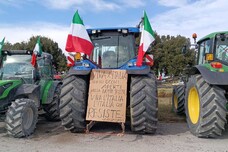A suspected ancestor of pizza has
been found in a still life at Pompeii, the first evidence that
the Ancient Romans ate something similar to the iconic pie
believed to have been invented in Naples in the 19th century,
sources at the ancient city buried by Vesuvius in 79 AD said
Tuesday.
While they stressed that it couldn't really be pizza because key
ingredients like tomatoes and mozzarella had not been brought to
Italy or invented yet, they said its shape was remarkably like
present-day pizza.
The food stuff depicted in the 2,000-year-old painting emerged
from an initial iconographic analysis of a still-life fresco,
which emerged in recent days as part of the new excavations in
insula 10 of Regio IX in Pompeii. It was found in the atrium of
an aristocratic abode that had a bakery tacked onto it.
Officials said that what was depicted on the wall of the ancient
Pompeian house could be a distant ancestor of the modern dish,
which was elevated to World Heritage status in 2017 as the
'traditional art of the Neapolitan pizzaiuolo'.
Culture Minister Gennaro Sangiuliano said the discovery showed
that "Pompeii is a treasure trove that never stops yielding
amazing finds" while the director of the Pompeii Archaeological
Park, Gabriel Zuchtriegel, pointed out "the remarkable
Hellenistic themes in the still life, which can be found in
Roman writers like the poets Virgil and Martial and the
philosopher Philostratus."
He also said that foods in the fresco could be "precisely
identified".
ALL RIGHTS RESERVED © Copyright ANSA











